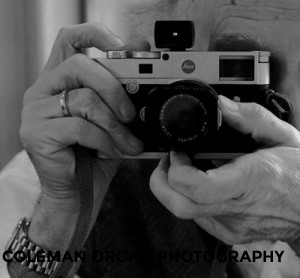My Friend David
On December 31, 1986 David Spielman and I sat drinking champagne in my son’s hospital room. Jeremy was not doing well. David, who was married, knew this and decided to spend that evening with me. At that time we had been friends for about 10 years, although the exact start date of our friendship escapes me. You see, he is a professional photographer.
We met at Alfredo’s Cameras, a very fine shop on Gravier Street in New Orleans. It specialized in Leica cameras. If you are David’s friend, the word, “Leica”, is always part of the conversation. The quintessential Leica is a rangefinder, built like a tank and generally costs one and a half times what a top-of-the-line Nikon or Canon does. It’s made in Germany and, technology wise, is in the dark ages compared to modern digital cameras. Taking pictures with it is like hunting bear with a bow and arrow. You have to be hard headed, a good “shooter” and somewhat masochistic just to use one effectively. In David’s hands, a Leica sings like a canary.
Our friendship grew as we spent Saturday mornings in the French Quarter, taking pictures. We would start with a cup of coffee and beignets at Cafe Du Monde. Not a lot of folks there at dawn. And then we would start out, stalking the streets, looking for that special shot. David usually found it. I suspect a fair number of those pictures now hang in his gallery, across the street from Commander’s Palace Restaurant.
If you happen to go to the Spielman Gallery, you will find him there, 365 days a year. (He actually does work seven days a week.) He’s dressed in starched khaki’s, a starched denim shirt, shoes which often look like they came from a different era, and with a Cartier or Rolex watch on his arm. He shoots all of his personal work in black and white, the photographic medium which essentially focuses the viewer on the content of the image. David is quirky, like the Leica, an anachronism in the modern age, but focused, no pun intended, on the substance of life. Stated differently, he takes beautiful pictures of New Orleans.
David has travelled the world taking pictures. Egypt, Ireland, England, France, etc, etc.. He’s taken pictures of the Pope and of Martin McGinnis and Gerry Adams of the Irish Republican Army. He’s photographed the old men and their toddler granddaughters feeding pigeons in Paris. He stayed in New Orleans during Katrina and shot boats strewn about the municipal yacht harbor like fish after a toxic algae bloom, the picture appropriately named, “Fish Kill”.
I recently reviewed his “Artist Statement”. It describes the man well, but doesn’t do justice to his photography. (He’ll want to kill me for this.) It doesn’t really convey how he has made a living as a professional photographer in New Orleans for almost half a century, no easy feat. Yes, it describes the quirks, the drive, the sense of humor and general perspective on life. But it is his work that tells the story, or almost all of it.
David was one of two major platelet donors for Jeremy. He and George Hebbler sat through many hours while their healthy runner platelets were harvested for Jeremy. When a man does that for your kid, you remember it. Every day.
I like movies and often quote memorable lines from the best ones. In the movie, Tombstone, Wyatt Earp and Doc Holliday help tame a bunch of outlaws. Val Kilmer plays Holliday, a gambler, gun fighter and hard drinker who came west to deal with tuberculosis. After a particularly bad gunfight with the “Cowboys”, one of Earp’s posse addresses Holliday, who is obviously very sick, yet there fighting with them, side by side. “Doc, why are you here? Why aren’t you home in bed?” Holliday responds, “Wyatt Earp is my friend”. The man responds, “Hell, Doc, I have lots of friends.” The camera zooms in on Holliday’s face, as he stares into the distance, and says, “I don’t”.
